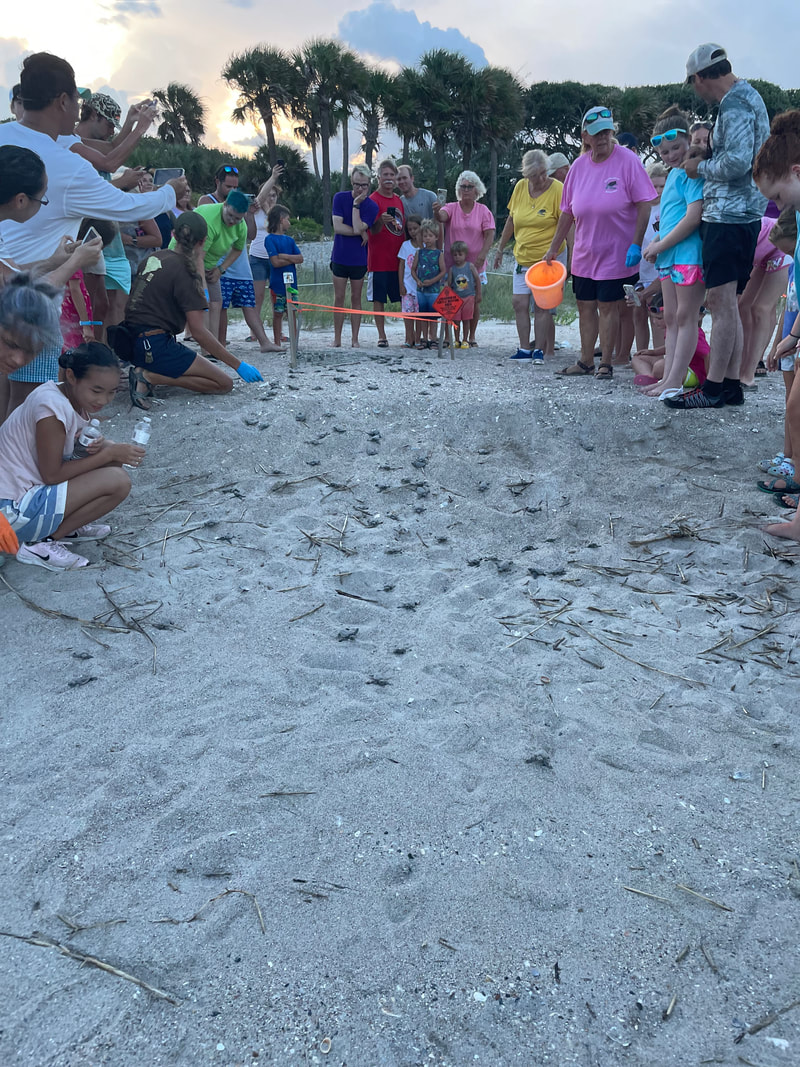|
Blog Post By: Christine Segnari, Sea Turtle Intern
Now that it is the end of July, exciting events are happening—public nest inventories! While the complete nesting season (including laying nests and nests hatchings) lasts through October, female Loggerheads will stop nesting near the beginning of August. Through Edisto Beach State Park and South Carolina DNR, we conduct public inventories. During these public inventories, we will sort through multiple nests that hatched 3-5 days ago. We wait 3-5 days to allow as many turtles to hatch naturally as possible. There are 5 categories that we sort that nest into during inventories: alive, dead, pipped, unhatched, and hatched. Live hatchlings found deep within the nest will be taken out of the nest and put into our inventory bucket. We will safely release these hatchlings into the ocean. Crawling out of the nest is extremely important for their development, so we will allow them to safely crawl into the ocean. However, if live hatchlings are found as soon as we begin digging into the nest, we will cover up the nest and wait another 3-5 days. Dead hatchlings (turtles that fully hatched out of their egg but did not survive) can result from a variety of circumstances. Sometimes they are not strong enough to get out of the nest, they might have crawled into an area of the sand that did not have air pockets, etc. Pipped hatchlings refer to any hatchings that are underdeveloped and are still trapped in the egg with their upper body sticking out. Unfortunately, most of the time these hatchlings have died; however, we do occasionally find live pipped hatchlings. In this case, we will cover the hatchling in sand as we continue the inventory. At the end of that nest’s inventory, we will rebury that hatchling in the nest and put up all the signage again. That way, the hatchling has the best chance at a successful natural emergence. Unhatched eggs are eggs that are still completely intact. Most likely, these eggs were unviable and were not able to form into turtles. Hatched eggs are the remains of the shell broken by the hatchling as it was trying to get out of the nest. In order for us to categorize it as a hatched egg, there must be 60% of the broken eggshell remaining or more. I completed my first public inventory a few days ago, and it was an incredibly exciting experience. Over 100 people came to watch the inventory! We were able to educate them on Loggerhead nesting practices and show them some hatchlings. Though Laughing Gulls (one of the hatchling’s predators) were present, we were able to get all the hatchlings into the ocean safely. Once we finished with the inventory, we were lucky enough to see a boil over (when the hatchlings make their emergence out of the nest) at a nearby nest!
0 Comments
Leave a Reply. |
Leah SchwartzentruberSea Turtle Biologist Archives
June 2024
|

 RSS Feed
RSS Feed